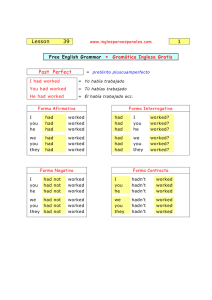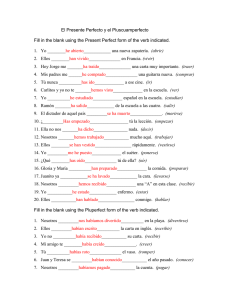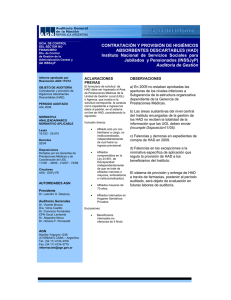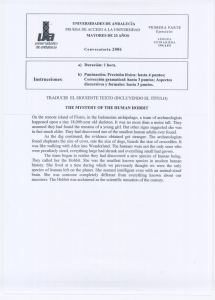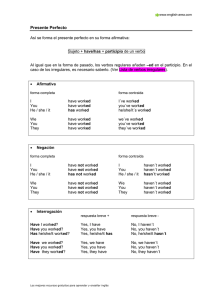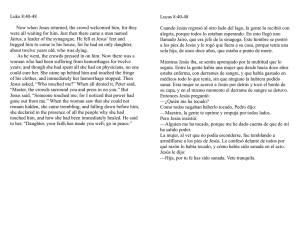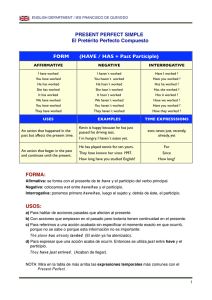Teoría Pasado perfecto
Anuncio
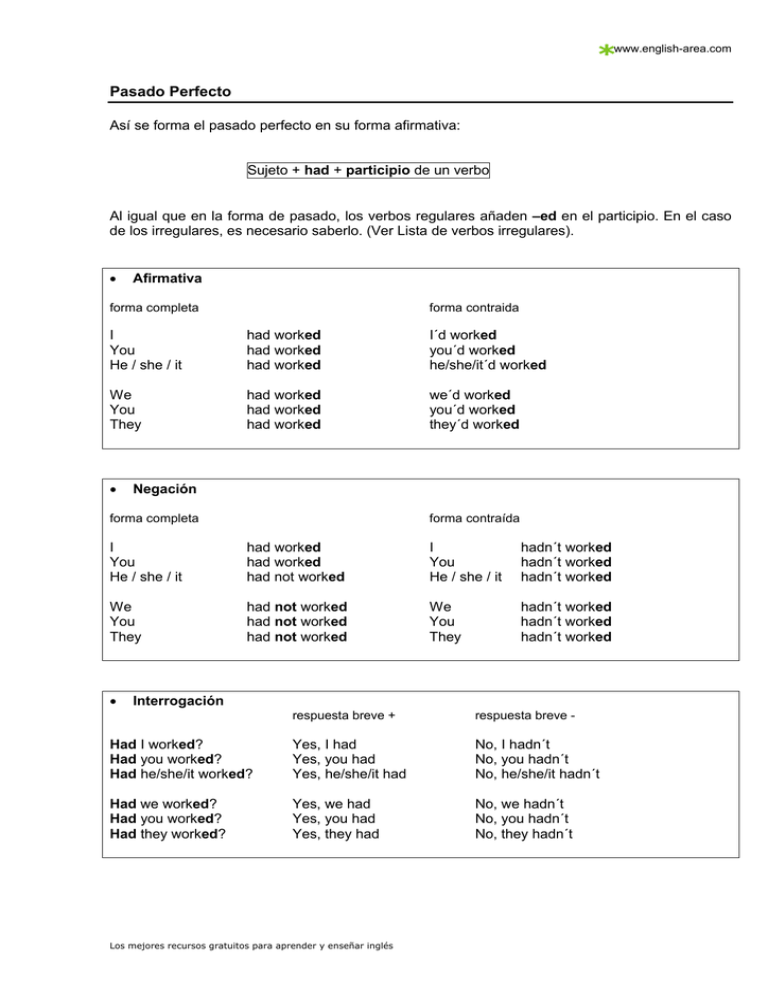
www.english-area.com Pasado Perfecto Así se forma el pasado perfecto en su forma afirmativa: Sujeto + had + participio de un verbo Al igual que en la forma de pasado, los verbos regulares añaden –ed en el participio. En el caso de los irregulares, es necesario saberlo. (Ver Lista de verbos irregulares). • Afirmativa forma completa forma contraida I You He / she / it had worked had worked had worked I´d worked you´d worked he/she/it´d worked We You They had worked had worked had worked we´d worked you´d worked they´d worked • Negación forma completa forma contraída I You He / she / it had worked had worked had not worked I You He / she / it hadn´t worked hadn´t worked hadn´t worked We You They had not worked had not worked had not worked We You They hadn´t worked hadn´t worked hadn´t worked • Interrogación respuesta breve + respuesta breve - Had I worked? Had you worked? Had he/she/it worked? Yes, I had Yes, you had Yes, he/she/it had No, I hadn´t No, you hadn´t No, he/she/it hadn´t Had we worked? Had you worked? Had they worked? Yes, we had Yes, you had Yes, they had No, we hadn´t No, you hadn´t No, they hadn´t Los mejores recursos gratuitos para aprender y enseñar inglés www.english-area.com • Uso del Pasado Perfecto: Este tiempo se utiliza para referirnos a un hecho pasado que tuvo lugar antes que otra acción también pasada o antes de algún momento concreto del pasado: - When he arrived, the film had finished. → - She found out that the he hadn´t gone to school. She said she had been at home that morning. • Pasado perfecto con already y just. - I had already had dinner when he phoned. (Ya había cenado cuando él llamó) - She told me to buy some bread when I had just come back from the supermarket. (Me pidió que comprara pan cuando yo acababa de volver del supermercado) Los mejores recursos gratuitos para aprender y enseñar inglés 1º acción: the film had finished. 2º acción: he arrived.
